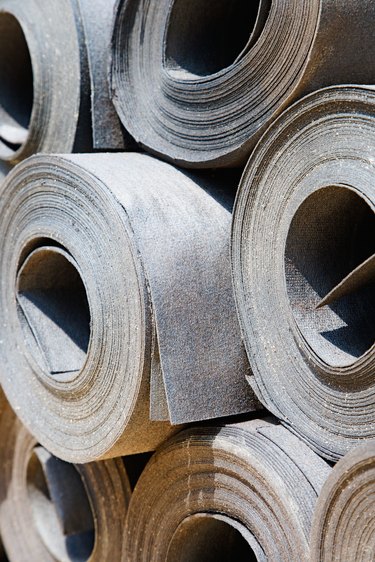
Tar paper, which is a paper-like material soaked in tar, is used for building homes. Primarily used for roofs, you can also use tar paper to line exterior walls before finishing them. Tar paper always goes on the outside of buildings and its primary use is as a waterproofing agent.
Direction
Video of the Day
When laying sheets of tar paper, always lay the sticky, glossy side down. Tar paper's two sides are noticeably different. One side is somewhat sticky, though don't expect it to leave a glue-like residue on your hands. The other side is smooth like paper, and typically contains lettering and line markings.
Video of the Day
Purpose
When you place the sticky side of the tar paper down, either on a roof or a wall, it helps produce a waterproof seal. On hot days, which are ideal for using tar paper, the heat from the sun will help soften the sticky side of the tar paper and melt it into place.
Laying
When laying sheets of tar paper during the construction or renovation of a building, staple the first sheet into place in the area you desire. When laying the adjacent sheet, ensure it overlaps on to the first sheet by at least two inches. Continue this overlapping method until you have covered the entire surface. Overlapping the sheets will help prevent water from seeping between the sheets.
Markings
When you lay tar paper down in the correct manner, you will notice that the non-sticky side of the paper has several markings. While some of these markings are commercial in nature, for example, the paper company's name and logo, you'll also notice a series of parallel lines. These lines are helpful for laying the shingles that you'll fasten to the top of the tar paper. Thanks to the lines, you will be able to fasten the shingles properly.